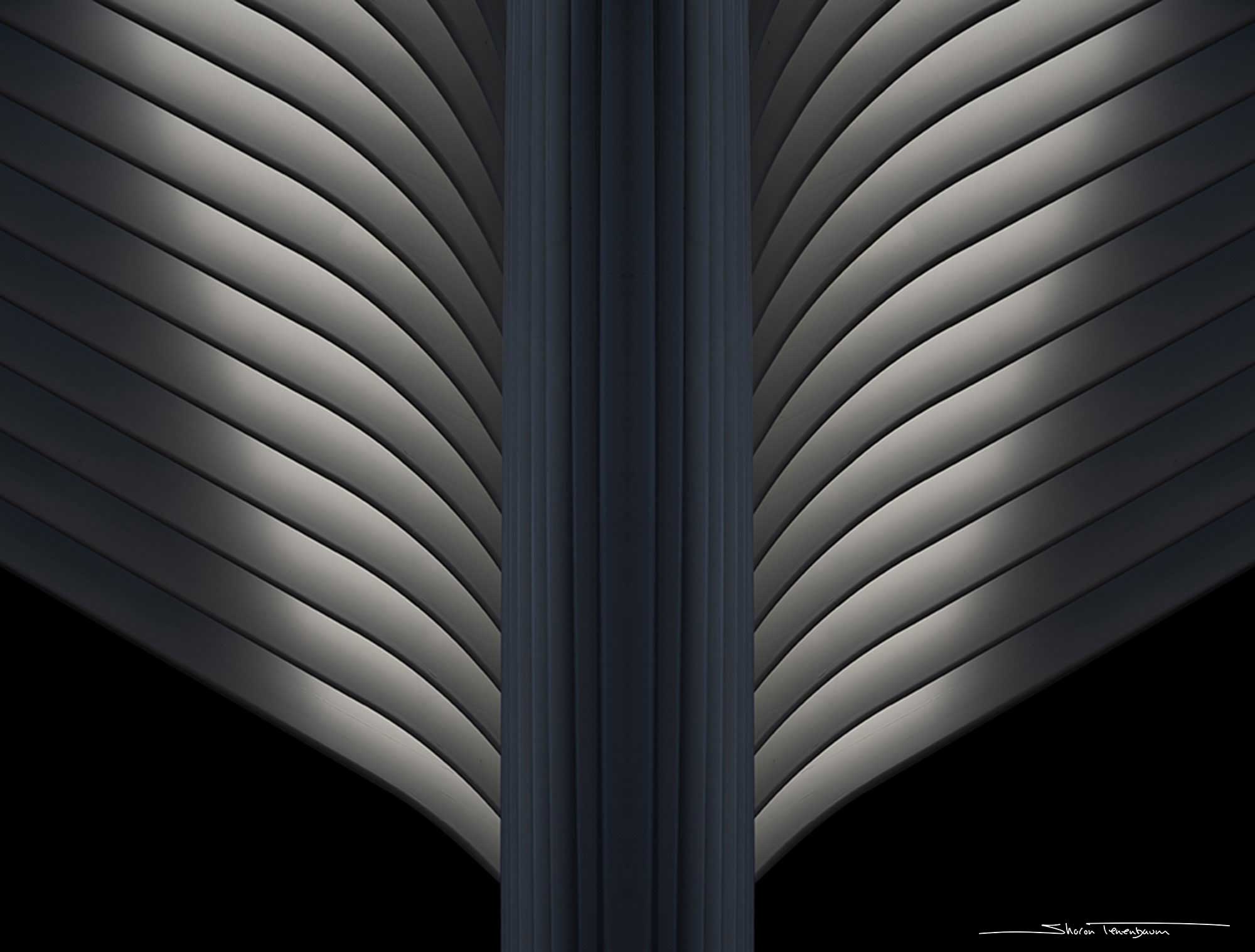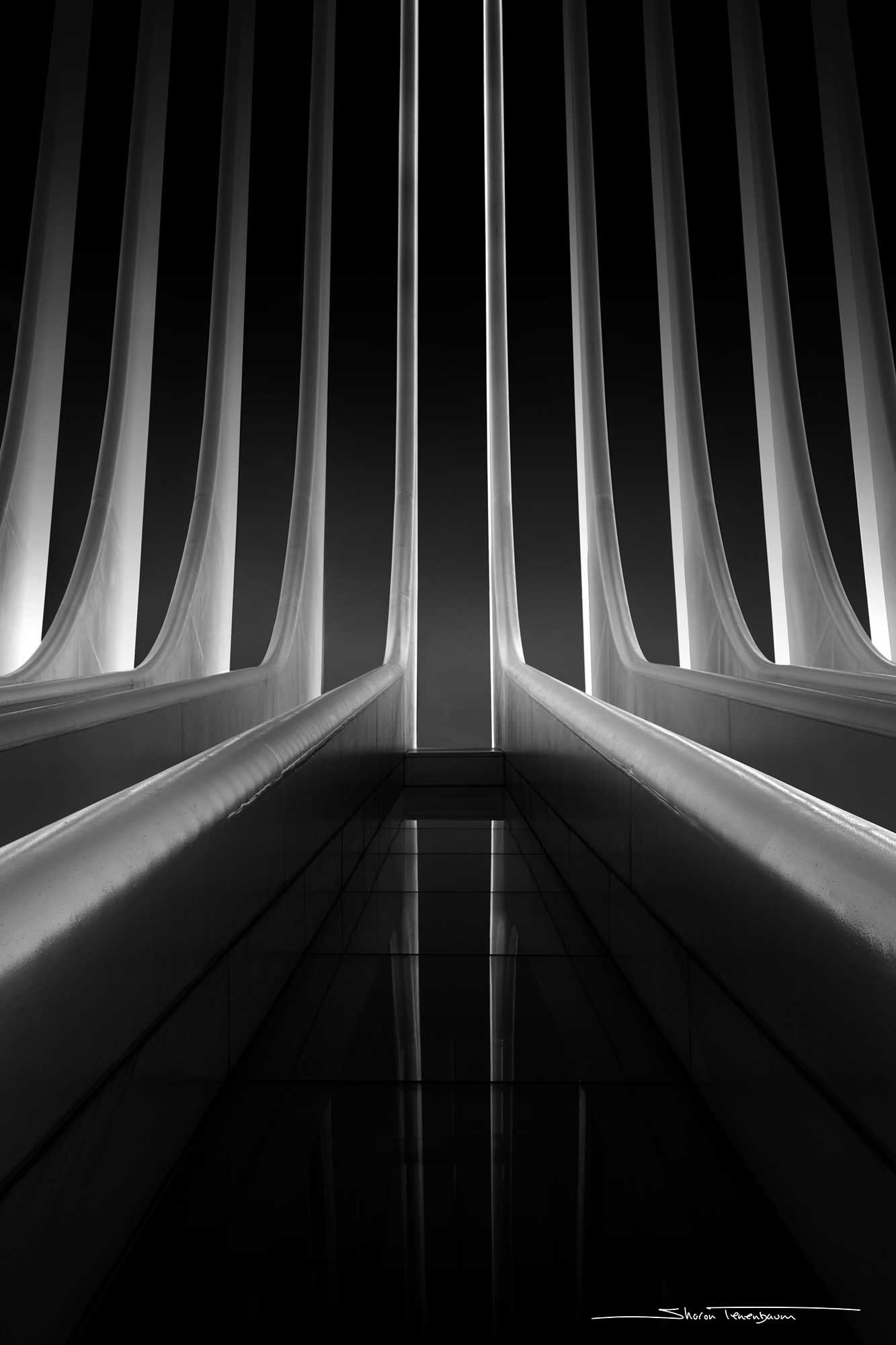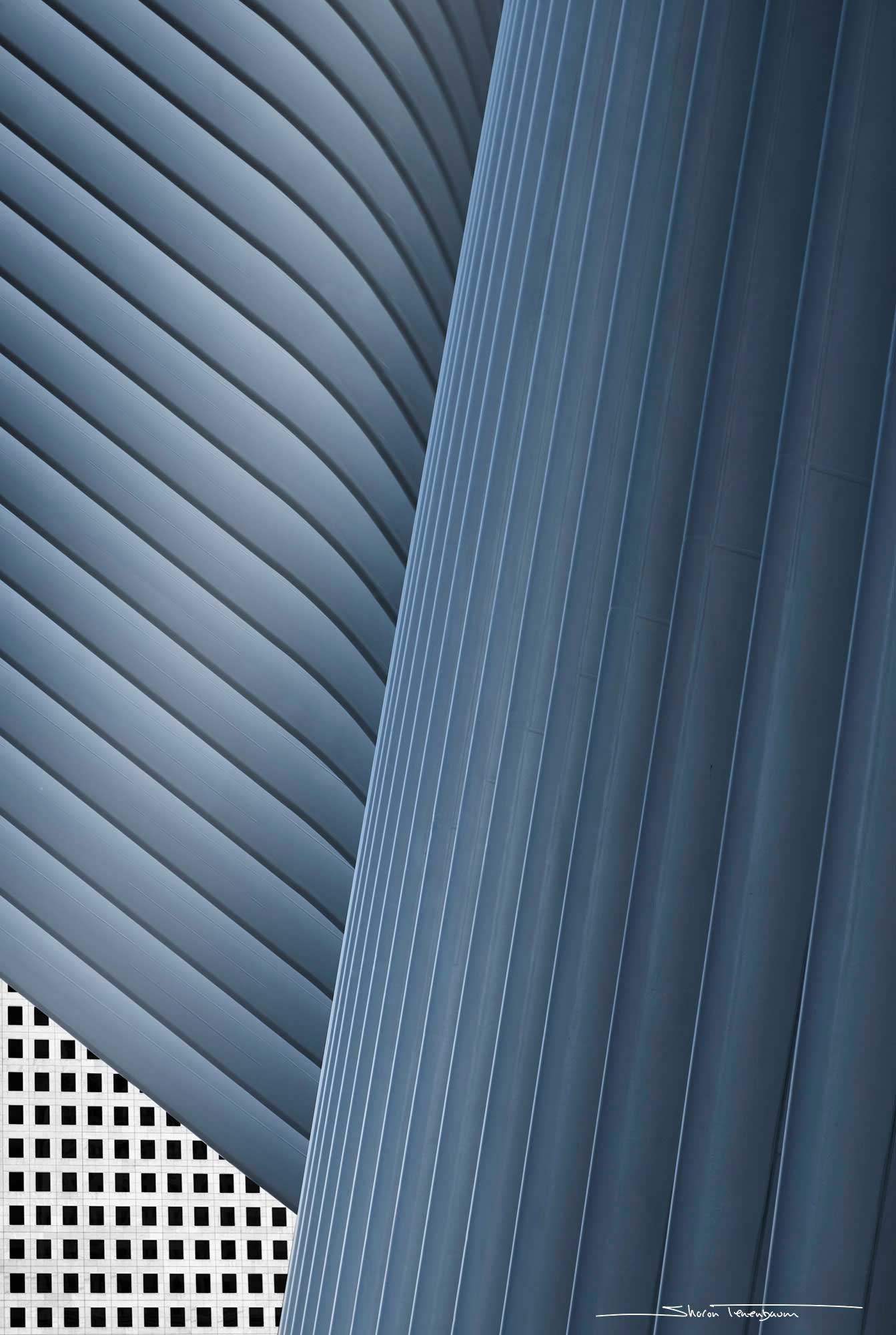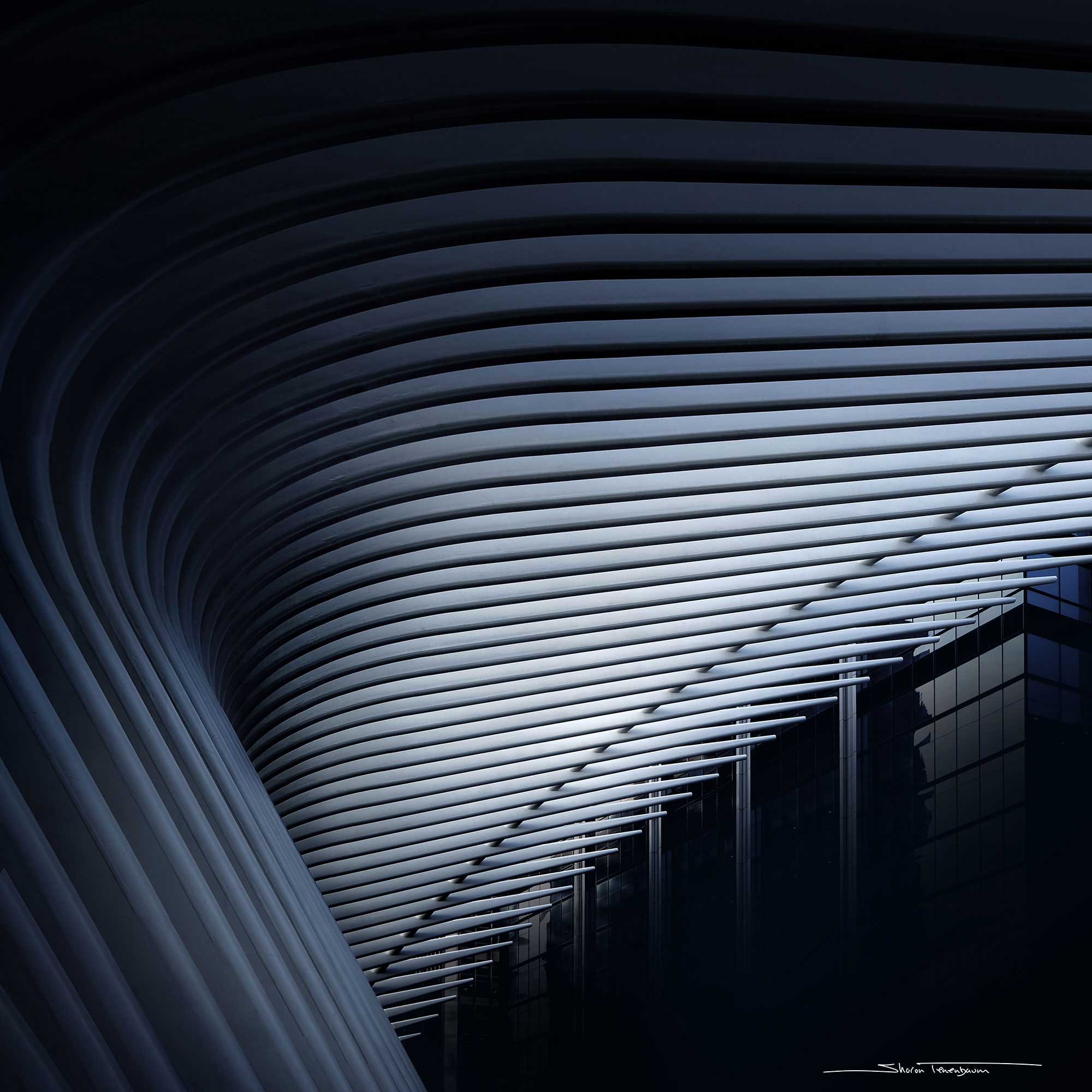I always felt that abstract photography was something one needs to mature into. It takes insight and patience to see what is insinuated rather than what is implied.
I analogise abstract photography to poetry, it is concise, elusive and only gives suggestive details the artist found relevant to convey their ‘story’. Creating abstract architectural photography was something outside my comfort zone, yet I admired it greatly in other’s work, something I personally could only aspire to.
In the latest Workshop I was teaching in NY, we were shooting by the Oculus train station. It was a getting near noon on a Saturday, needless to say the area was packed with people, I had to think how I could capture this structure with not actually showing it in its entirety, as doing so would mean I would need to include in my frame many irrelevant details such as the crowds of people. This challenge forced me to think outside my typical photo capturing style. I decided to take the opportunity to experiment with abstracts, as looking up, one could not ignore and admired the interplay of lines, shapes and light. I was seeing a celebration of geometric shapes illuminated in such a way that I actually saw in my mind’s eye a dance between the light and the lines.
To convey what I saw in mind’s eye, I had accentuate and exaggerate details using composition, colour, contrast and gradient lighting. After all, I was the one that was emotionally moved by the scene, I now had to visually convince others of the emotional impact the scene had.
In the image above, through composition (creating a symmetrical image) I transformed the scene into something can be interpreted in many ways (as in poetry). To some, it can look like a book, while to others, the tail of whale, it can even look like the two at the same time. That is the beauty of abstract, letting the mind find what it sees externally as a reflection of our internal world. Additionally, I decided to keep the subtle colors and not convert the image to black and white. I did this as colors are always emotionally charged. By toning them down, I didn’t let them take ‘center stage’ but rather let the form of the image stand front and center.
In the image above I want to express the importance of having vision in your work. Knowing what it is you want to ‘say’ (visually). At first, I was fascinated by the beam distortion of the close-up wide-angle lens, the perfect leading lines and symmetry. My vision was to use the center two beams as a tribute to the Twin Towers that fell in the exact spot in which this structure stands today. To convey this vision, I heavily used contrast and gradient lighting. Contrast, to accentuate the black and white, as white will look whiter next to a black background. Also, by using gradient lighting, I not only used the beams as leading lines, but also the light to direct my viewers in the direction of my intension. Gradually increasing the light from the bottom of the frame to the top as the direction of the beams.
Composition is king! Nothing will say (or not say) so much as composition will. What you decide to include or exclude in your frame will speak volumes. This image was to create a celebration of patterns. The clean elegant layers of lines created by the structure, almost feminine like in their curviness, in opposition to the rigid grid like façade of the building behind it. Juxtaposition adds tension and depth in scene, here I captured it with geometry.
Lastly, I couldn’t resist creating one image that would tie the structure in with its surrounding. The play and dance I saw between the light and the structure. The light inviting you in further the tunnel-like shape of the ribbed beams. The blue tones adding the warmth of emotional context – speaking to our heart, whereas the repetitive patterned lines to our analytical brain.
The topic of Abstract Photography is multifaceted and complex, especially in the sub-field of architectural photography. Sharon Tenenbaum, being an engineer and artist, teaches the artistic and scientific aspects of this fascinating field. Join Sharon on her workshops to learn more.
Sharon Tenenbaum
Sharon Tenenbaum is a multiple international award winning fine art photographer. Sharon was educated as a Civil Engineer and practiced as a Professional Engineer in Vancouver Canada. In late 2007, she made a decision to part from engineering in order to pursue her passion for photography. Sharon’s creative voice has a distinctive style in which she combines her scientific and artistic side in creating exceptional Architectural Photography Portfolio. Sharon shares her passion by teaching fine art photography workshops around the world as well as at Langara College and Simon Fraser University in Vancouver, BC.










